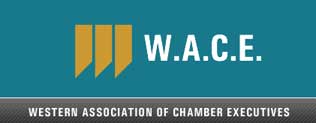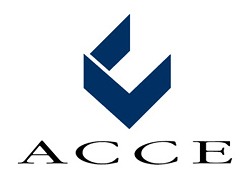
It’s a new year. Are you ready for change but hate resolutions? We have a few ideas.
If you’re like most people, you fall into one of two camps–those who see the new year as a glorious beginning to work, life, and the chamber (in which case you’re “team resolutions”) or you think new year’s resolutions are worthless and something no one can possibly adhere to (you’re “team neveresolutions”).
While there is an amusing commercial out there right now reminding us how most fail at their resolutions (National Quitter’s Day is the second Friday of January, if you’re marking your calendar), if you want to make changes in your life, there are ways to approach it that can be more rewarding than simply swearing you’ll never do something again.
Commitment and Memory
Sometimes, the difficulty in making a change is not a lack of willpower. Your previous unsuccessful attempts may have been due to a lack of consistent commitment in breaking an existing habit. As the old saying goes, “Habits are something we do without thinking. That’s why some of us have so many of them.” Many of our habits are simply auto-pilot behavior. For example, two weeks before the holiday season, I restricted my sugar and my processed carbs. I wanted to get healthier. I rocked it for two straight weeks, finding things I could enjoy that were still healthy for me. Then the holidays (and the family and the stress eating) came.
As you would expect, I caved and ate things that weren’t on my list of acceptable foods. But it wasn’t so much that I chose to eat them. At one point, I was listening to a relative’s story and realized I was enjoying a sweet Hawaiian roll. There wasn’t even a decision about whether I should eat it or not. I simply grabbed it out of habit and chowed down before I realized that was not part of my new lifestyle change.
You may find the same thing happens to you. When you have years of habit doing one thing, and your mind is on auto-pilot, it’s easy to slip back into actions you’re trying to stop.
The best way to combat that is to make the actions/your goals a consistent part of your life. In James Clear’s book, Automic Habits, he writes about habit stacking, attaching what you want to become your new habit to an old one like doing squats as you brush your teeth (or right after for those of us who are not coordinated enough to pull brushing and squatting off at the same time. Example is mine, not his.). If you want to discover other tips about making habits stick, read his book.
To Do or Not to Do
No, we’re not diving into Shakespeare here but this is an important distinction when navigating change personally and professionally. There are two types of goals–doing something new (or differently) and not doing something. For instance, an example of doing something is a goal of creating and hosting a new chamber event. Conversely, an example of not doing something is giving up sweets.
Which one is easier? To do or not to do?
That comes down to personal preference and personality. Are you an innovator who gets excited about something different or are you a rules follower? Innovators will enjoy the newness of a unique challenge (or a to-do goal), whereas rules followers enjoy established protocols and sticking to them (even if it’s a negative of avoiding something).
Once you discover which personality you are, you may want to change your original goal to fit your discovery. For instance, if your goal is to avoid sweets but you’re an innovator, don’t give yourself a rule of “no sweets.” You’ll likely break it. Instead, give yourself a new adventure or challenge. “I will use this new year to discover new vegetables at our farmers market and new ways to enjoy them.”
Remembering your goals and phrasing them in a way that appeals to your personality will help you overcome the hardest parts of sticking to them.
But now that we have that out of the way, let’s cover the different methods you can use to affect change in the new year without resolving to do it.
Resolutions for People Who Hate Resolutions
Guiding Word
Many individuals choose a guiding word that defines their intentions for the year. This word serves as a mantra, helping to focus their decisions and actions. For example, someone might select “courage” to inspire them to take bold steps or “gratitude” to cultivate a more positive mindset throughout the year.
Many people also use a single word to define a change they want in their career or personal life. This method can also work for the chamber.
If you decide to choose this method, you would weigh your decisions or potential actions against that word. For instance, if your word was retention, you would weigh each of your decisions on its impact on member retention.
But most chamber pros are overachievers so we need more than a word, right? You can accomplish the same idea with the following method. That way you get 12 opportunities/words.
Monthly Themes
Some people dedicate each month to exploring a new theme or habit. This approach allows for incremental change and keeps motivation high. For instance, January could be focused on health, February on relationships, and March on personal development, encouraging continuous growth and exploration throughout the year.
From a chamber perspective, you could assign a different goal focus every two months or every quarter. This focus allows you to build a strong habit of execution around it too.
SMART Goals
Setting SMART goals (Specific, Measurable, Achievable, Relevant, and Time-bound) is another effective strategy. For example, instead of saying “I want to exercise more,” one might set a goal like “I will walk 10,000 steps five days a week for the next three months” to create clear accountability and track progress.
Skill Alignment
Sometimes meeting your goals means learning a new skill tangentially. For instance, if you want to eat healthier, perhaps you will enroll in a healthy cooking class. If you want to travel or lead your chamber in travel to foreign lands, perhaps you can take up a new language in preparation. Matching new skills with your goals can keep you motivated and help maintain focus when challenges arise.
Volunteering and Community Engagement
In the same way as mastering a new skill, you can also tie community service into your goals. If your goal is to do more public speaking, you can give volunteer talks at your library or community rec center. Not only can it be a great way to increase your speaking engagements and exposure, it also enhances personal fulfillment and connection with others, deepening your interest in obtaining your personal or professional goals.
A Final Note: Digital Detox and Your Goals
A growing trend, especially in helping with goals, is committing to a digital detox, where you set limits on social media usage or take breaks from technology altogether (yes, this means TV too). This goal aims to improve mental well-being and foster more meaningful real-life interactions. It also frees up your time to dedicate toward achieving your goals.
This year, don’t worry about resolutions. Think about ways you might bring your goals to successful fruition by trying alternative approaches to them.

